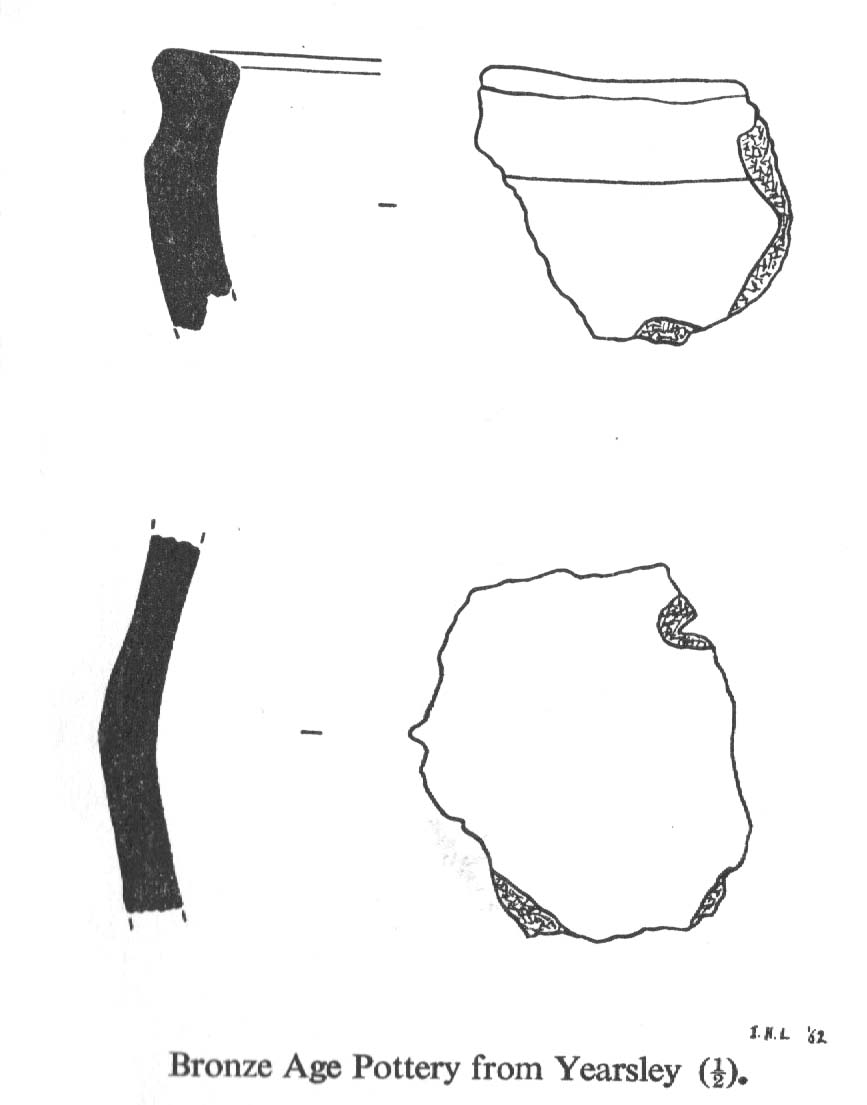‘Tumulus’ (destroyed): OS Grid Reference – SE 592 737
Archaeology & History

A curious entry inasmuch as it’s difficult to categorize the site correctly. Added to this is the fact that the place has been built over! But despite these misgivings (if that’s the right word!), the site’s deserving of a posthumous entry…
There used to be a curious-looking mound here, immediately east of Intake Lodge, that “was due to be bulldozed so that a field of rough pasture could be brought under cultivation”, killing the indigenous wildlife that was living here. However, before this was done, some inspectorate dood who worked for the Ancient Monuments Commission and the Ministry of Works “decided to excavate”, as he believed that an ancient burial mound was in the field. Mr I.M. Stead (1963) takes up the story, telling:
“”This mound was about 75ft by 90ft diameter and 6ft high, on ground sloping away to the south-east. It had every appearance of being a barrow.
“The excavation, in October 1961, was supervised by the writer (and) assisted by Mr A.L. Pacitto. A trench on the east side revealed layers of sand which appeared to be natural, and a second trench, on the west side, uncovered a capping of stone which confirmed that this was not a barrow. However, it seems that the writer was not the first person to mistake it for an artificial burial mound. A disturbed area in the centre, some 15ft diameter, where there had been an old water-tank, produced a fragment of Bronze Age pottery and a sherd from another Bronze Age vessel was found in a disturbance on the side of the mound. A small area near the centre was cleared in the hope of finding an undisturbed burial, but shortage of funds did not permit more extensive stripping. Judging from the type of pottery (see image) and its situation on the mound, there can be little doubt that one two occasions Bronze Age people placed secondary burials in the natural mound.”
This tells us that although the mound wasn’t a tomb or burial mound in a traditional religious sense, it was instead a sacred hill of the dead for the local people at one time or another in ancient days. And, if Mr Stead had been a decent archaeologist and continued to excavate here without pay (as he should do if he loves his subject), we may have found more beneath this now-lost sacred mound. Unfortunately this didn’t happen and we lost vital clues and information.
References:
- Stead, I.M., “An Excavation at Yearsley, North Riding, 1961,” in Yorkshire Archaeological Journal, part 161 (volume 41), 1963.
© Paul Bennett, The Northern Antiquarian
The map could not be loaded. Please contact the site owner.